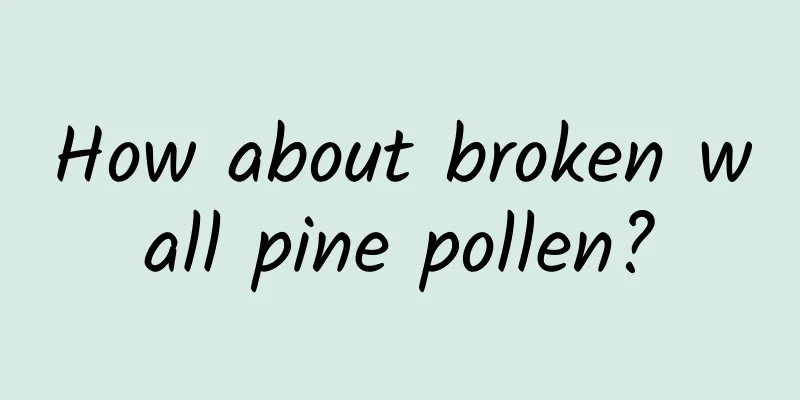Can the animal medicinal material snow frog be eaten if it is moldy?

|
There are many kinds of Chinese medicinal materials, and each kind of medicinal material has its own value, so when we are sick, we can choose the appropriate Chinese medicinal material to take. Snow frog is also a Chinese medicinal material. So can snow frog still be eaten if it is moldy? The answer is no, and there are many issues we need to pay attention to. It is not as simple as we imagined. Next, let us find out whether snow clam can be eaten even if it is moldy? Snow frog is an animal medicinal material, which is very different from general plant medicines or mineral medicines. This animal medicine is more likely to deteriorate, and once it deteriorates, it will be very toxic. So, since it has already become moldy, it is a very serious problem. It is better not to take it to avoid poisoning. How to preserve snow clam Snow clam can be frozen. Freezing temperatures are generally between -10o and -1o. Freezing, also known as "refrigeration", is a method of artificially creating low temperatures by applying the principles of thermodynamics. Refrigerators and air conditioners both use the principle of refrigeration. From a chemical perspective, a gas with a high critical point is generally used, pressurized and liquefied, and then vaporized to absorb heat. This process is repeated, releasing heat in other places during liquefaction and absorbing heat in the required range during vaporization. The essence is that the harsh natural environment of winter creates extremely strong vitality for snow frog. Therefore, snow frog is known as the "crown of vitality" in nature. Every autumn, it is the time when snow clams store energy to prepare for hibernation, and it is also the time when snow clams have the strongest vitality. In particular, the oviduct of the female snow clams (snow clam paste) gathers all the nutrients for reproducing offspring in the coming year. The nourishing function of the snow clams at this time is unparalleled. In fact, the efficacy of snow clam as a beauty tonic is well known. It is salty and flat in nature, neither dry nor hot, and contains a large amount of protein, amino acids, various trace elements and a small amount of hormones that are beneficial to the human body. It is especially suitable as a daily tonic. Identification of Snow Clam Real snow clam: High-quality snow clam paste is in irregular flakes, curved and overlapping, 1.5-2 cm long and 1.5-5 cm thick. The surface is yellowish-white, waxy, slightly transparent, with a fat-like luster, and occasionally has grayish-white film-like dry skin. It feels smooth to the touch and its volume can expand 10-15 times when soaked in warm water. It has a fishy smell, slightly sweet taste, and a sticky feeling when chewed. It is better to have more flakes and less granules. False snow frog: It is mostly made from the ovaries of common frogs or toads; it is in irregular strips, arranged in a spiral shape, with an egg yolk yellow and light green surface, no fat-like luster, and an obvious fibrous membrane running through it. It is less oily, slightly fishy and has no fragrance, and tastes slightly bitter and astringent. Snow clam is salty and flat in nature, neither dry nor hot. It contains a large amount of protein, amino acids, various trace elements and animal polypeptide substances. It not only has significant effects on nourishing yin and beauty, enlarging breasts and beautifying skin, but also delaying aging. It can also lower blood lipids, resist fatigue, soothe the liver and nourish the stomach, enhance the body's immunity, and improve the oxygen supply and oxygen utilization capacity of brain tissue cells. Li Shizhen's Compendium of Materia Medica records that Rana oil has the effects of "relieving fatigue and fever, promoting diuresis and reducing swelling, and replenishing deficiency." Rana oil is a high-end nutritional product that has medicinal, food-replenishing and beauty functions. It can be eaten all year round, and long-term consumption is better. Since the Ming Dynasty, it has been called the "soft gold" among tonics. The above answers the question of whether snow clam can still be eaten after it becomes moldy. Although snow clam is a traditional Chinese medicinal material, we can still eat snow clam when we do not have any disease, but we must eat it in moderation, not too much or too little, otherwise it will not have any effect. In addition, we should also pay attention to the way of eating snow clam and must not make a mistake. |
<<: Can I still eat the Chinese medicinal sea cucumber if it is moldy?
>>: How to preserve bird's nest
Recommend
How did the ancients keep things cool? This air conditioner is more energy-efficient!
Summer is here, and it is the season for barbecue...
The effect of drinking gentian soaked in water
Gentiana may be very unfamiliar to most friends w...
Effects and functions of periwinkle
There are many types of Chinese medicine. When we...
The hard-working red blood cells are just like you who work hard...
When it comes to red blood cells, readers will de...
The efficacy and function of Photinia fraseri root
The essence of traditional Chinese medicine is to...
The efficacy and function of duck foot grass
As a traditional Chinese medicinal material, duck...
What are the effects and functions of stone oak
People may not talk much about Dendrobium. People...
Bank for International Settlements: Breaking through new paths for cross-border retail CBDC payments
The Bank for International Settlements has publis...
What are the effects of eating lotus seeds together?
Gorgon fruit and lotus seeds look similar in appe...
The efficacy and function of ash leaves
Chinese medicinal materials are very common, and ...
The flood situation in Guilin and Meizhou is worrying. After the heavy rain, you must pay attention to these!
Recently, many places in Fujian, Guangdong and Gu...
If you let AI do your college entrance examination Chinese test, how many points can it get?
Editor’s Note: This article mainly analyzes the p...
What are the effects and functions of Quisqualis chinensis?
Traditional Chinese medicine culture is profound ...
The efficacy and function of frozen green leaves
The medical value of frozen green leaves is beyon...









